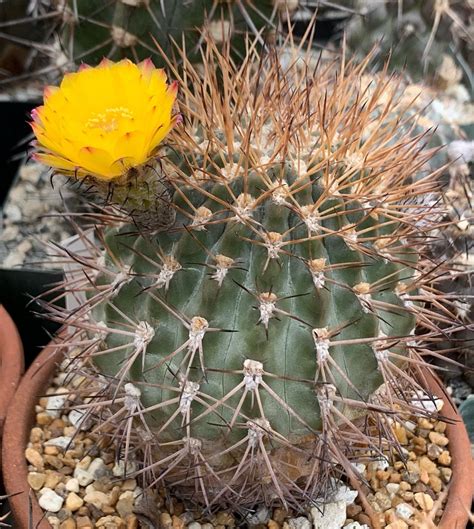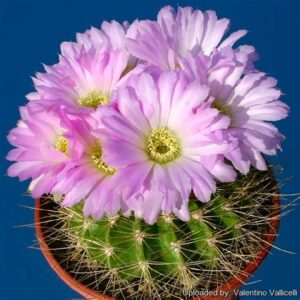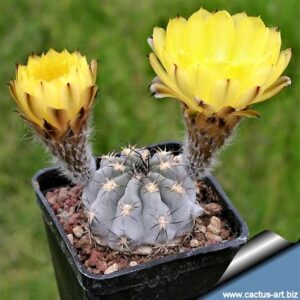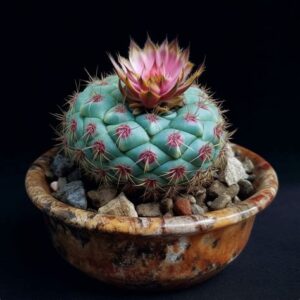Acanthocalycium thionanthum, an intriguing species within the Cactaceae family, captivates horticulturists and succulent aficionados alike. Renowned for its striking appearance and hardiness, this cactus thrives in environments that might challenge less resilient plant variants. Cultivating Acanthocalycium thionanthum involves understanding both its aesthetic appeal and its specific care needs. In this article, we will delve into the best practices for nurturing this remarkable cactus, ensuring optimal growth while enhancing its natural beauty.
To fully appreciate Acanthocalycium thionanthum, one must consider its origins. Native to the arid regions of Argentina, this cactus is uniquely adapted to survive in conditions characterized by intense sunlight and minimal rainfall. Its cylindrical shape and vibrant flowers serve not only as a testament to the harsh environments from which it hails but also as points of fascination for enthusiasts and casual gardeners alike. Understanding these characteristics is crucial for successful cultivation.
Before embarking on the journey of nurturing Acanthocalycium thionanthum, it’s essential to consider the fundamental elements that influence its growth. Soil type, light exposure, watering schedules, and environmental conditions all play critical roles in the health of this succulent.
What constitutes the ideal soil for Acanthocalycium thionanthum?
Proper soil composition is paramount for the vitality of Acanthocalycium thionanthum. A well-draining potting mix enriched with gritty material is paramount, as this species is particularly susceptible to root rot. The recommended mix might include components such as coarse sand, perlite, and pumice. These components not only facilitate drainage but also provide adequate aeration to the roots.
A soil pH level between 6.0 and 7.5 is ideal for cultivating Acanthocalycium thionanthum. Regular potting mixes suited for succulents can be amended with additional perlite or special cactus soil blends to achieve the desired consistency.
Indirect versus direct sunlight: What does Acanthocalycium thionanthum prefer?
Light requirements for Acanthocalycium thionanthum are quite distinct. This species thrives best in locations that provide bright, indirect sunlight. Direct sunlight, especially in its unfiltered form, can cause sunburn on the plant’s surface, leading to unsightly scorch marks. A window that receives ample daylight yet is shielded from the harsh midday sun is often ideal. For those who live in exceptionally sunny climates, employing sheer curtains can mitigate the risk of overexposure while still allowing adequate light penetration.
When grown indoors, rotational placement of the plant can enhance even growth on all sides. If you notice the plant bending towards the light source, it is an indication it seeks more exposure. Rotate the pot occasionally to maintain balanced growth patterns.
Watering practices: How much is too much?
Watering Acanthocalycium thionanthum is a practice that must be approached with caution and precision. Unlike conventional houseplants, this cactus thrives on a “less is more” ethos. Overwatering is one of the most prevalent issues faced by cactus caretakers, often resulting in root rot and subsequent demise of the plant.
The watering strategy should mirror the cactus’s native habitat, which experiences periods of drought followed by sporadic rainfall. A good rule of thumb is to allow the soil to completely dry out between watering. During the growing season, typically from spring to late summer, watering once every two to three weeks may be adequate. Conversely, during the dormancy period in late fall and winter, the frequency should be reduced, maintaining just enough moisture to prevent desiccation.
Signs of distress in Acanthocalycium thionanthum can manifest in subtle ways. Yellowing of the flesh, mushiness near the base, or a noticeably pungent odor are often telltale indicators of overwatering. Conversely, a shriveled appearance signals a need for increased moisture. Careful observation will lead to a healthy relationship with this remarkable species.
Temperature and humidity: What’s the sweet spot?
Acanthocalycium thionanthum thrives in conditions that mirror the arid deserts of its native Argentina. Optimal growth occurs at temperatures ranging from 70°F to 95°F (21°C to 35°C) during the day, with a slight drop at night. It is important to note that while this cactus appreciates warmth, it can endure brief exposures to cooler temperatures. However, consistent exposure to temperatures below 50°F (10°C) should be avoided, as frigid conditions may impede its growth and vitality.
Humidity levels should remain low, as this species does not favor excessive moisture in its environment. Indoor growing spaces with lower humidity levels are typically satisfactory, allowing for adequate air circulation, which is vital for preventing fungal issues.
Fertilization: Is it necessary for Acanthocalycium thionanthum?
Fertilizing Acanthocalycium thionanthum can be a beneficial practice, but it must be executed thoughtfully. When grown in nutrient-deficient soil, the cactus may benefit from light applications of fertilizer during its active growing months, typically from spring through summer. A diluted, balanced, water-soluble fertilizer is recommended, used sparingly to avoid nutrient burn.
Excessive fertilization can lead to lush growth that improves aesthetics but weakens structural integrity. As this plant has evolved to thrive in nutrient-poor environments, proper timing and moderation in fertilizing should be key components of cultivation practices.
Pest control: What should you be wary of?
Acanthocalycium thionanthum is generally resilient against pests; however, vigilance is required. Common pests such as spider mites, mealybugs, and scale can sometimes become problematic. Regular inspections of the plant for any visual signs of infestation are essential. Should pests be detected, a gentle spray of insecticidal soap or neem oil can be effective in curtailing their growth while safeguarding the plant’s health.
In many instances, prevention is more effective than treatment. Maintaining optimal strengthening conditions—like proper watering schedules, adequate light exposure, and limited humidity—will help keep Acanthocalycium thionanthum robust and less susceptible to infestations.
Conclusion: The enduring allure of Acanthocalycium thionanthum
The Acanthocalycium thionanthum is more than just a mere botanical curiosity; it is a living testament to the wonders of adaptation and resilience. Growing this unique cactus offers not only aesthetic gratification but also the opportunity to embark on a fulfilling horticultural journey. By understanding and respecting its natural needs, one can cultivate a vibrant specimen that serves as a rewarding addition to any collection. As enthusiasts delve into the nuances of care and growth, they discover not just a plant but also the joy of nurturing life in its most resilient form.





Leave a Comment